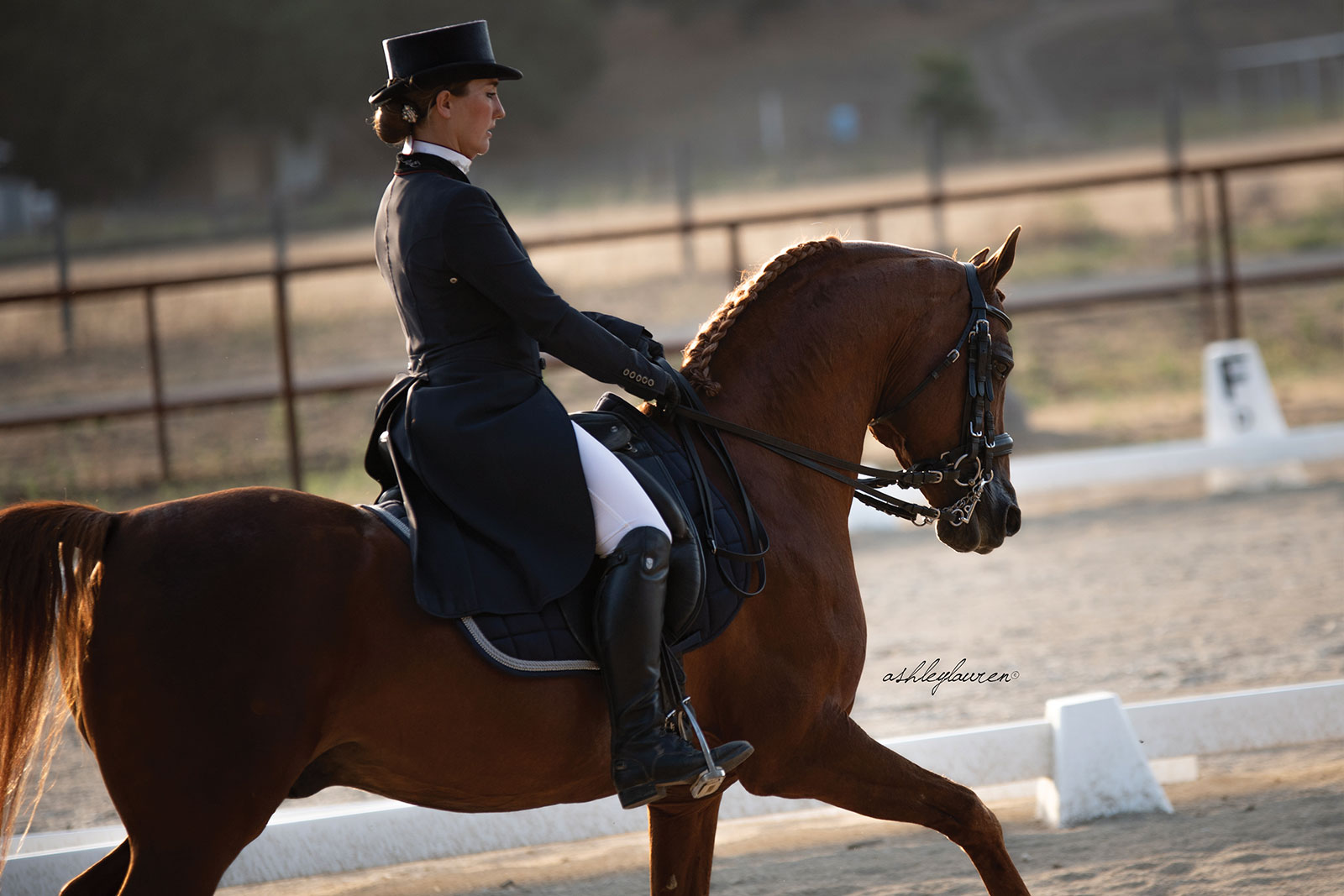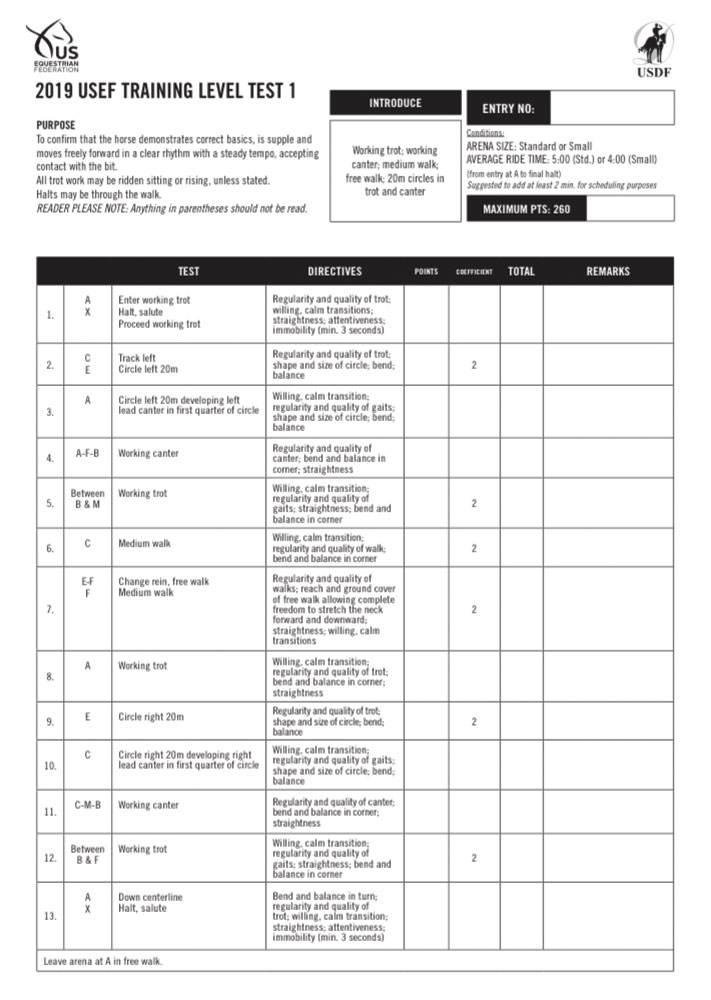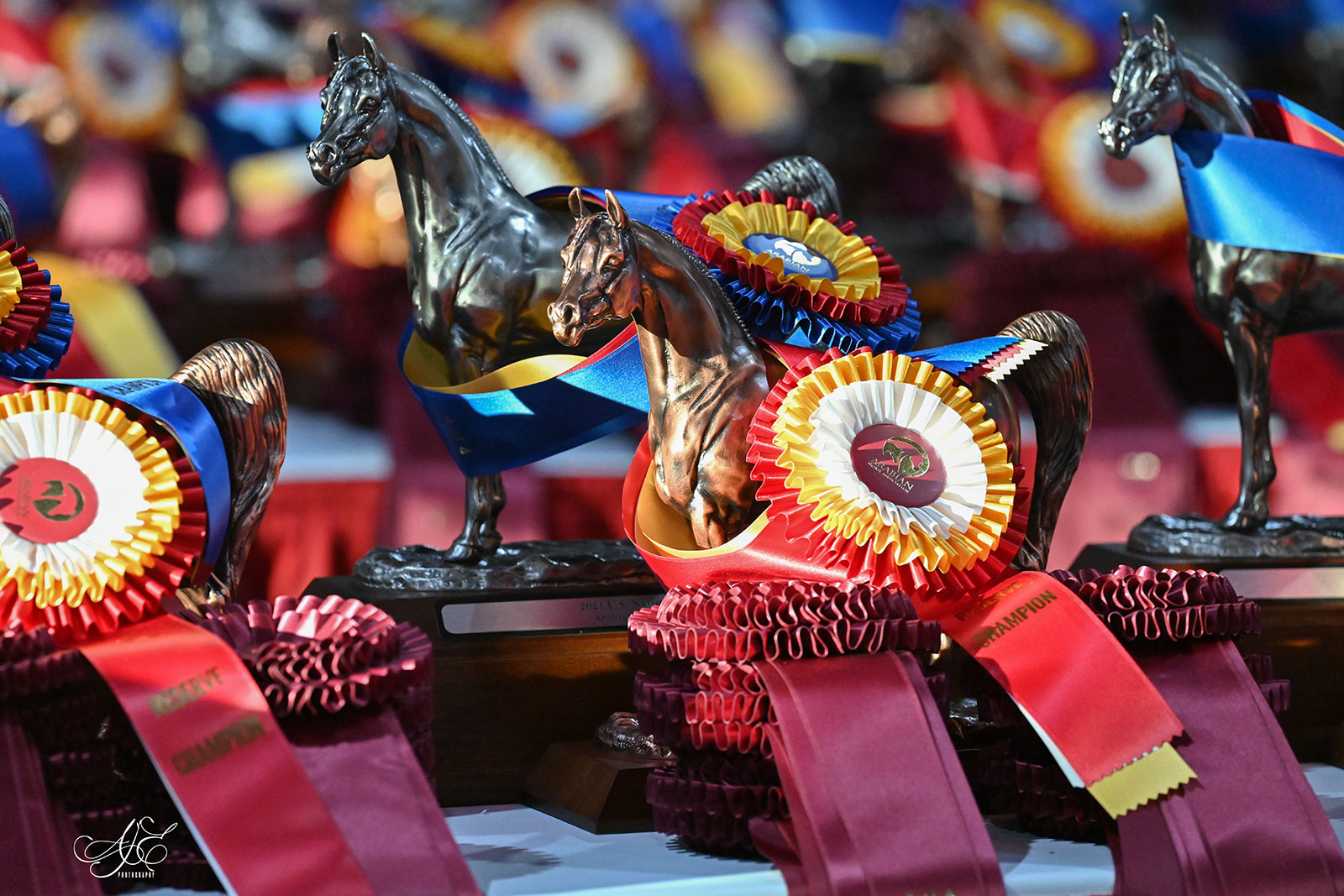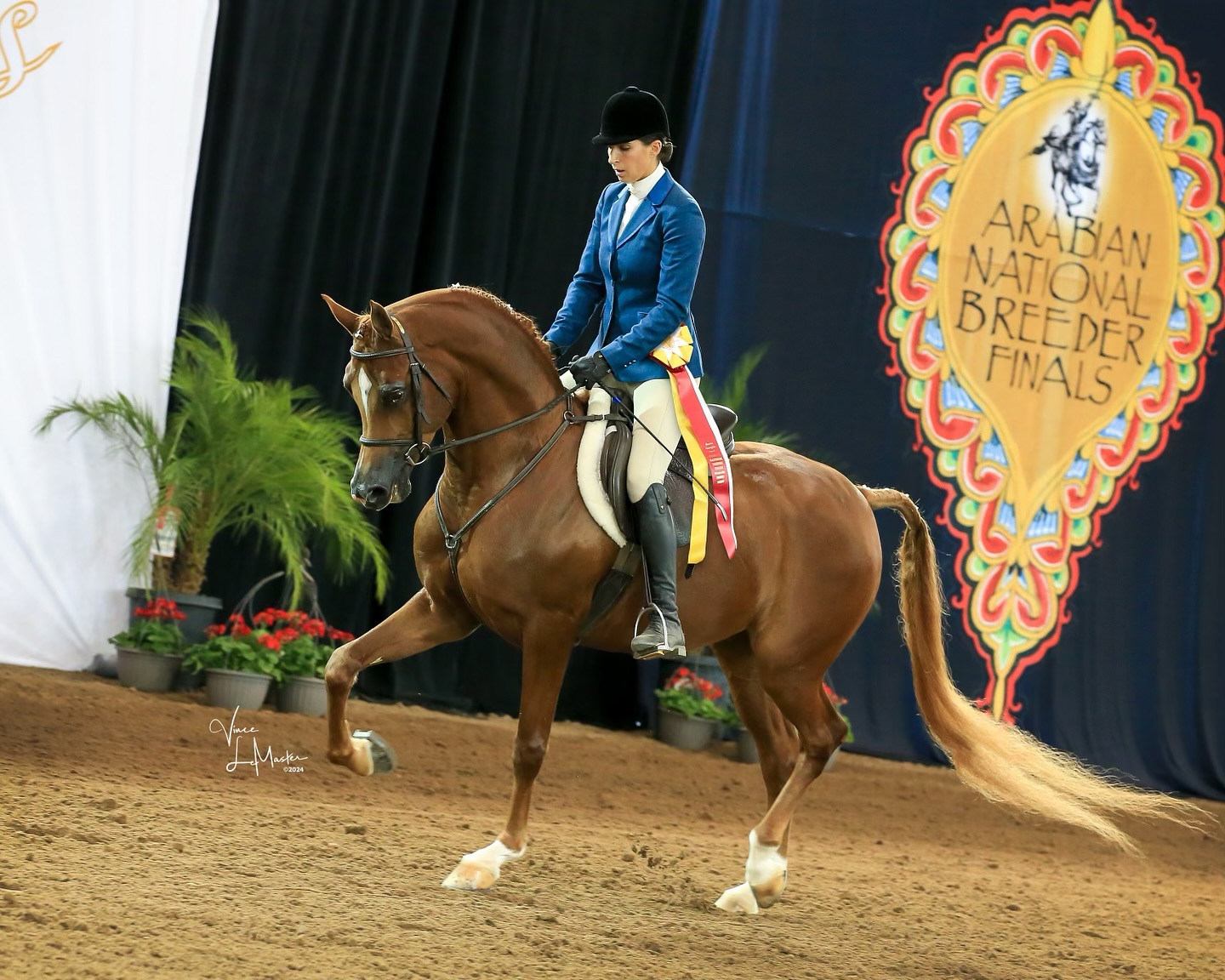By Brianna York
As featured in the Summer 2024 issue of Arabian Horse World
One of the things that I like the most about dressage, is the comment sheet that you are given after every ride. There are so many other competitive horse pursuits where you never know why a judge didn’t place you or why you couldn’t quite get that blue ribbon that you were hoping for.
Having access to comments that come directly from your judge is so helpful to your riding and it is a key perk of choosing to show in the dressage ring. No matter what level you are at in your riding, the comments of your judge can help you to improve your riding the next time you trot down the centerline at A.
One of the things that I often hear from people who are new to dressage, however, is that they are not quite sure what to make of the comments that they have been given. I get asked all the time what specific comments mean and how to use them with the goal of improving scores. These tips should help you to make the most of the dressage commentary on your score sheets so that you can improve and grow as an equine athlete.
One of the first things that I often have to explain to riders who are new to the dressage experience, is that the scores that you are given are based on the “ideal” performance of that particular movement. There is a standardized expectation for each and every movement that you perform in the dressage court, whether you are showing at Training Level or Grand Prix.
This means that, if you want to understand your scores and judge’s comments, you need to be aware of the expectation of the level of test you are riding and the specific movement that is being scored. I remember being very perplexed by some of the commentary I was getting over and over again as a new dressage rider, solely because I didn’t know that the “ideal” movement looked very different from what I was showing to the judges.
Each dressage test is carefully crafted with a specific set of goals along the training scale. The training scale is intended to help riders to correctly train their horses all the way up the levels. When you know what the expectations for your specific level of dressage test are, you can more accurately understand critiques and positive commentary on your test.
Always look at the top of your dressage test and see what it says the test is supposed to display to a judge. This will help you know if you are meeting the overall goal of the level you are riding at or not. You should also look at the movements that are scored as coefficients. These movements will have a little “2” next to them.
The coefficient scores indicate that these movements are essential to proving that your horse is ready to move on to the next level. If you are not scoring well on these movements, you can expect that the rest of your scores will be lower than you would like as well. Typically, if you are scoring well on these core movements, you can expect a higher score for your entire ride.
How Do I Read the Judge's Commentary?
So, now that you know how the scoring system works and what the scores you are getting are based upon, we should talk about how to read your judge’s comments in order to improve your riding.
First of all, it is very important to remember that your judge is not trying to offend you or hurt your feelings. Most dressage judges are very matter-of-fact and you will typically only see succinct commentary on your test. Many judges will also write some added thoughts at the bottom of the test with their overall thoughts about your ride, but you should not expect flowery writing or an excess of flattery. Remaining objective about what you have been told by your judge throughout the score sheet is essential if you want to improve as a rider.
Next, I always look at the comments to see if there are consistent themes. For me, coming from a main ring background, there is almost always a lot of commentary about needing to follow the horse more with my hands. I am working on this, and I will eventually get better and better at meeting this expectation in my riding. However, until I do, I expect to see commentary of this nature in nearly every score sheet I receive.
When you see consistent themes like the example I have just offered, you will have identified places where you can work to improve your riding. Improving these issues with your riding will help you get a better rider score for the entire ride.
Comments about the size and shape of your movements should always be heeded as well. Dressage is very precise, and if you are not clear about the size and shape of the movements you are performing, you will harm your score. Judges will often tell you exactly what you need to do differently when you ride your next test if your geometry was incorrect. This is very helpful and can help you to significantly improve your scores without needing to go home and make major changes to your riding or your horse’s training.
Lastly, you should always look for instances where your horse’s frame is being critiqued. Frame is a key aspect of the training scale, and it is directly tied with your score. If your horse is too high-headed and tight in the frame for Training Level, your score will suffer because your horse is not meeting the expectations for the level. On the other hand, if your horse is too long and disorganized, you might score poorly at the upper levels which have a set expectation for a more collected frame.
Other comments might be more specific to your own riding on that day, and you might need to chalk those up to a moment when your horse spooked or didn’t listen very well for one reason or another. It is a very nice aspect of dressage that you are scored on each movement of your ride. This means that you can score a 1 and then in the next movement, get a perfect 10!
Try not to hang onto small issues like a break in gait, a spook, or a wrong lead, because the rest of your ride could be flawless, minus that movement. You can still get a huge score even with a mistake.
Your Dressage Score Sheets
Can Help You as a Rider
Knowing more about how to interpret the commentary from your judge on your dressage tests can be a big help, no matter what level you are showing at. Always remember to be open-minded and to take the judge’s advice to heart. It is very rare to be offered unfair commentary from a dressage judge, so you should heed the advice that you are offered on your tests. Dressage judges, in my experience, are often very supportive of rider growth and can help you to get an objective opinion on your riding that is very helpful.
Understanding the goals and aims of the tests that you are riding can also help you to improve your presentation of your tests while improving your horse’s skills. Knowing what the ideal version of each movement looks like can make it much easier to figure out how to improve your scores and interpret your judge’s comments.
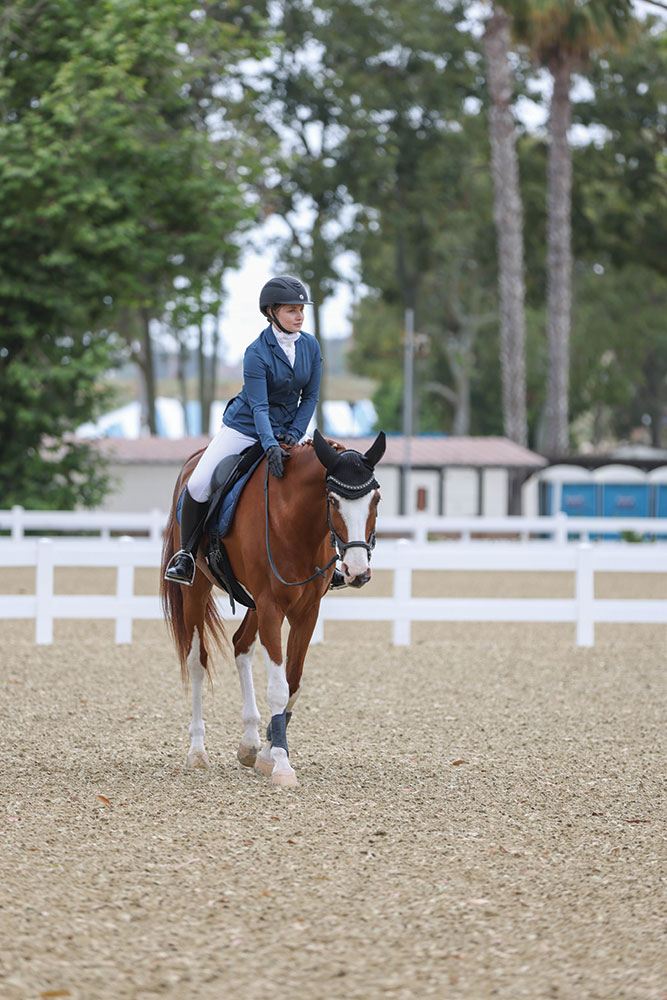
If you don’t have a trainer to help you break down your judge’s comments, you can usually count on the other exhibitors to help you get a better understanding of what the judge meant. You can also sit down courtside and watch other people ride the same tests to see if you might be missing something to do with specific movements or your overall presentation.
Dressage offers you the chance to pursue a clearly-defined training scale from the Introductory tests, all the way through Grand Prix. If you understand the scores that you are given along the way, you will make it much more likely that you and your equine partner will meet and exceed all of your riding goals.



